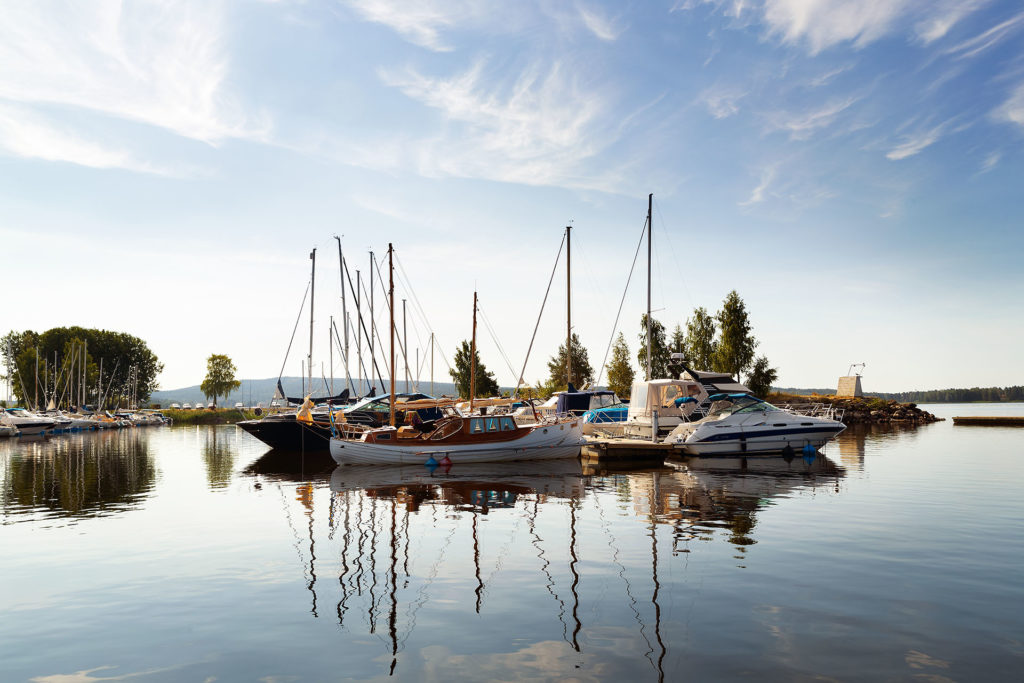Culture and nature in Sweden’s innermost harbour.

cosy towncentre invites you to enticing shops, delicious and exciting restaurants and a harbor which is the home of entertainment during the summers. There is something for everyone in Arvika with must-sees for those interested in culture, amazing music, 365 lakes perfect for fishing and water-activities and wide forests. Right in the heart of Värmland.
Restaurants and activities
In Arvika there are plenty of must-see spots and activities for the whole family. The vast woods and the many lakes attracts tourists from all over Europe to canoe and hike their way through our beautiful countryside. Glaskogen Nature Reserve is home to 30 miles of hiking trails which people travel all over Europe to hike. For those interested in culture there are also plenty of museums where you can experience art of the highest standard in charming surroundings. The Rackstad museumis the cream of the crop among Swedish art museums. With new exhibitions happening all the time along with a permanent exhibition from the Rackstad colony – there is always something new to discover.
Arvika has several lovely restaurants and cafes, so it’s not far between places to eat. Fine cafes like Nordells Konditori and cosy Elins Bakgård enhances your experience of Arvika. In summer, the restaurants in the harbor are open and you can enjoy good food in a lakeside environment, music at Olssons Brygga and pleasant walks along the water. Arvika’s center has plenty of nice shops, cozy cafes and a sportscenter with pools of different kinds including Pirate-vika for kids. Golfing is also a great way to spend your time in Arvika which is home to a great golfingcourse called Kingselviken and is located in Edane just outside Arvika. You can play adventure golf, mini golf and shuffleboard at Minigolfparken which is situated in Edane, just outside of Arvika. Klässbols Linen Weaving Mill are the producers behind the cloths and napkins used at the royal palace and embassies all over the world. At the factory you will have the once in a lifetime opportunity to view as the cloths are being made. Finish your trip to Klässbol off with lunch at KaffeKvarnen.

History and culture
Arvika being Swedens innermost harbor gives it connections to all seven seas. During the 1800s the harbor was vital for Arvikas transport and economy. Even more important to Arvika back in the day was the arrival of the Northwestern mainline and traintrack, introduced in 1971, which transformed Arvika from a humble trading and handicraft town into a bustling industry town. The strategic location next to the mainline connecting Oslo and Stockholm is still used to this day. It is used as a peoplecarrier and a way of transporting products to the rest of the world. During the 1800s Arvika was called Oscarsstad, as a celebration of second in line to the thrones son Oscar. In 1821 the name Arvika was given back to the area and the town gained its township in 1911.
The abundance of clay along with the influence from The Rackstad Colony transformed Arvika into the culture and handicraftstown it is today with many active ceramists and artists. Ingesunds Music School strengthens the towns musical traditions and thanks to the school locals are spoiled with choice when it comes to concerts.
Motorsport has and will always be a popular past time for many locals to Arvika. Many famous motorsport-professionals are in fact born and bred in Arvika. Among the most famous are: Kenny Bräck, Per Eklund, Tommy Kristoffersson, Johan Kristoffersson, Petter Solberg och Oliver Solberg.
The forests in Arvika municipality are the center of the white moose found in western Värmland. The most famous white moose Ferdinand became famous via social media, lived in the northern part of Arvika municipality. In 2018, a one-hour program was broadcast on SVT about this unique white moose and his friends in the forest.
Business and education
Arvikas towncentre is to this day divided into a city plan consisting of grids which was created in 1811. Many well known architects have worked on buildings in Arvika. One of them is Färdinand Boberg who drew Disponentvillan in Jösseforsin an Italian style and Ivar Tengbom who drew The Trefaldighetschurch in the center of town in the style of art nouveau.
Arvika has always been an industrial town. Volvo Construction Equipment AB is one of the municipality’s largest workplaces with more than 1,000 employees. Other major export companies are Swegon, Westmatic, Thermia and Klässbols Linen Weaving Mill.
At Arvika Näringslivscentrum , an old converted tobacco factory is today home to around 40 companies and organizations with 400 employees. There is also a learning center with adult education, commissioned education and university education.
Accommodation and Camping
In Arvika there is accommodation for all tastes and budgets, everything from the largest hotel Scandic Arvika to cosy private accommodation options. Ingestrands Camping is beautifully situated on the shore of the Glafsfjord just outside Arvika. It is the largest campsite with around fifty cabins, nice RV sites next to the lake, and plenty of camping pitches. At Guesthouse Eleven in Jössefors you can combine comfortable and close-to-nature accommodation with good food and activities in the forest and on the lake. If you go to Glaskogen Nature Reserve you will find Glaskogens Camping which offers wilderness camping with uniqe camping pitches for camper vans and caravans.

